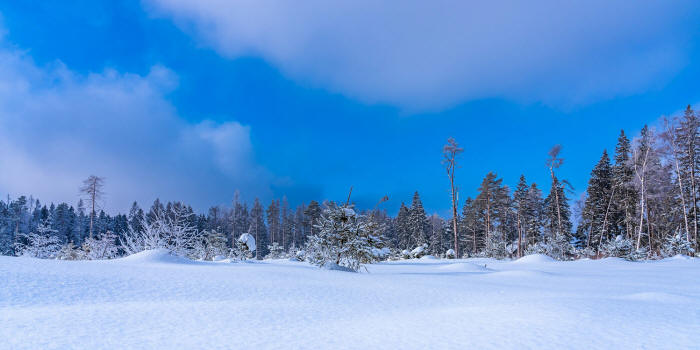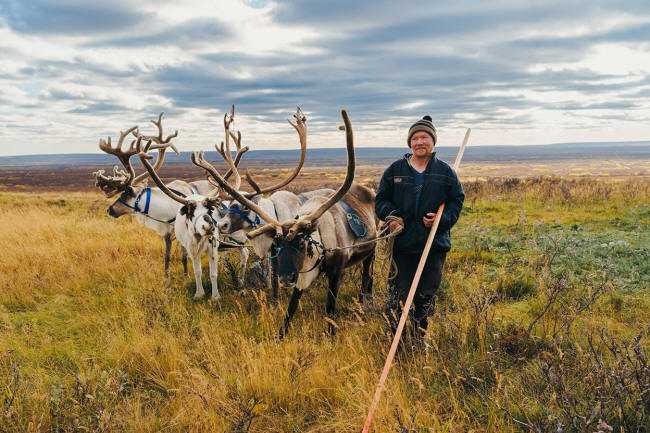|
shutterstock
That's the thinking behind recent proposals to plant more trees in, But we recently published a paper (Tree Planting is No Climate Solution at Northern high Latitudes) in the journal Nature Geoscience in which we argue that tree planting is no climate solution at northern high latitudes.
If we are to address climate change, it is of course imperative to reduce the concentration of 'greenhouse gases' in the atmosphere.
However, other components of the Earth system also play important roles in determining if any given intervention will cause the planet to warm more or less.
One such component is known as "albedo".
In the northern high latitudes, snow covers the ground during many months every year.
Snow is white, which makes it reflect about three quarters of the solar energy hitting it when covering the tundra:
In winter, much of Canada, Alaska, Russia and Scandinavia is covered in snow. Nasa GSFC
Trees and tall vegetation protrude from the snow blanket and darken Earth's surface, lowering its albedo when covered in snow to average values below 50% and causing more snow to melt.
In the far north, the warming effect of the lower albedo of trees exceeds the cooling effect of the carbon they take from the atmosphere by converting CO2 into biomass.
That is, when accounting for both albedo and the carbon the trees may end up taking out of the atmosphere and storing, tree planting in the far north actually ends up warming the climate.
Soil carbon released into the atmosphere
But there is more.
There is more carbon in Arctic soils than in all the trees on Earth combined, and this includes every rainforest in the tropics. Growing trees in the Arctic could cause some of that carbon to be released.
That's because, even in the unlikely best-case scenario where a tree plantation tries to minimize soil disturbance, growing trees still discharge sugars from their roots.
The unavoidable outcome of an afforestation project in the Arctic is decades of release of large quantities of soil carbon to the atmosphere.
That's an unacceptable contribution to atmospheric greenhouse gases in the period where we most critically need reductions.
Forests in the far north also have a tendency for being disturbed by other factors.
All these risks are increasing the warmer the Arctic gets.
Intensively managed forests could mitigate the risks to some extent, but such management isn't feasible in remote areas on a massive scale.
Reindeer herding in the tundra of northern Russia. Ksenya_89 / shutterstock
Last, but by no means least, beyond its effects on climate, high latitude afforestation can harm Arctic biodiversity and challenges traditional livelihoods such as reindeer herding and caribou hunting.
We can fool ourselves but not the Earth
Why, then, do people plant trees in the Arctic...?
Local people might want to ensure a supply or timber, for instance, or to reduce their dependency from imports.
But these initiatives should not be sold as a "climate solution"...
It is not the first time that we've see carbon credits being traded without much due diligence, enabling initiatives to thrive despite doing little to help mitigate climate change.
Since we won't fool the Earth system but only ourselves, we urgently need to,
There are viable nature-based climate solutions in the Arctic and its surrounding regions, however.
For instance,
This can happen both directly, by herbivores keeping tundra landscapes open, and indirectly, through the effects of herbivores foraging in snow, which decrease its insulation capacity and help reduce the temperature of the soil.
Large herbivores also reduce climate-driven biodiversity loss in Arctic ecosystems and remain a fundamental food resource for local communities.
We don't yet understand everything about how these large animals affect their ecosystems, but the evidence backing their effectiveness is more robust than that of many lavishly funded climate mitigation initiatives.
Ultimately, though, any nature-based solution must be led by communities in the far north, who live at the front line of climate change.
|




